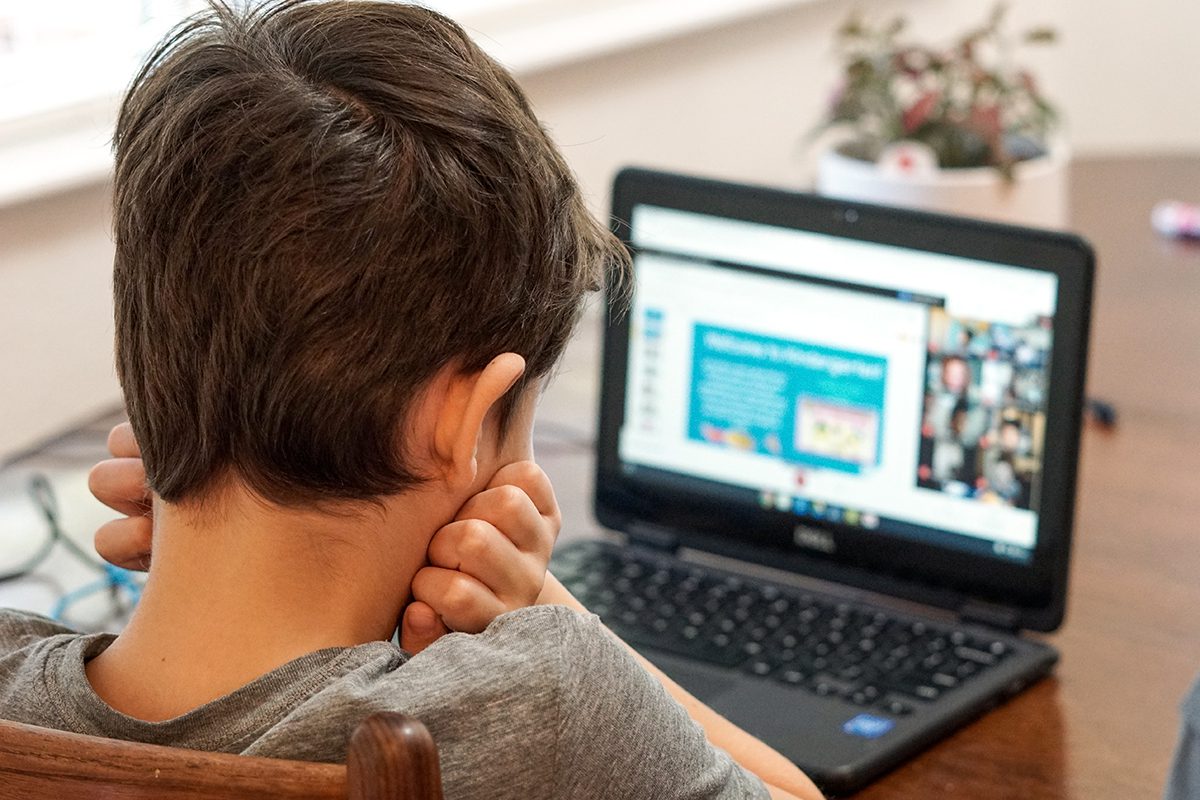Gen Z is the current generation of students. They are the first generation to have around-the-clock access to the internet and other advanced technologies. Because of that, they are often referred to as “digital citizens.” A digital citizen uses the internet regularly and effectively to gather, learn, and share information. Because the internet and technology are omnipresent in our students’ lives, our responsibility as educators is to guide them in responsible digital citizenship. While this is often left to core subject teachers, students use technology often in our art rooms as well. It is important that we, as art teachers, educate our students to be responsible artistic digital citizens.
Read on for insight on how to guide your artists to be responsible digital citizens.
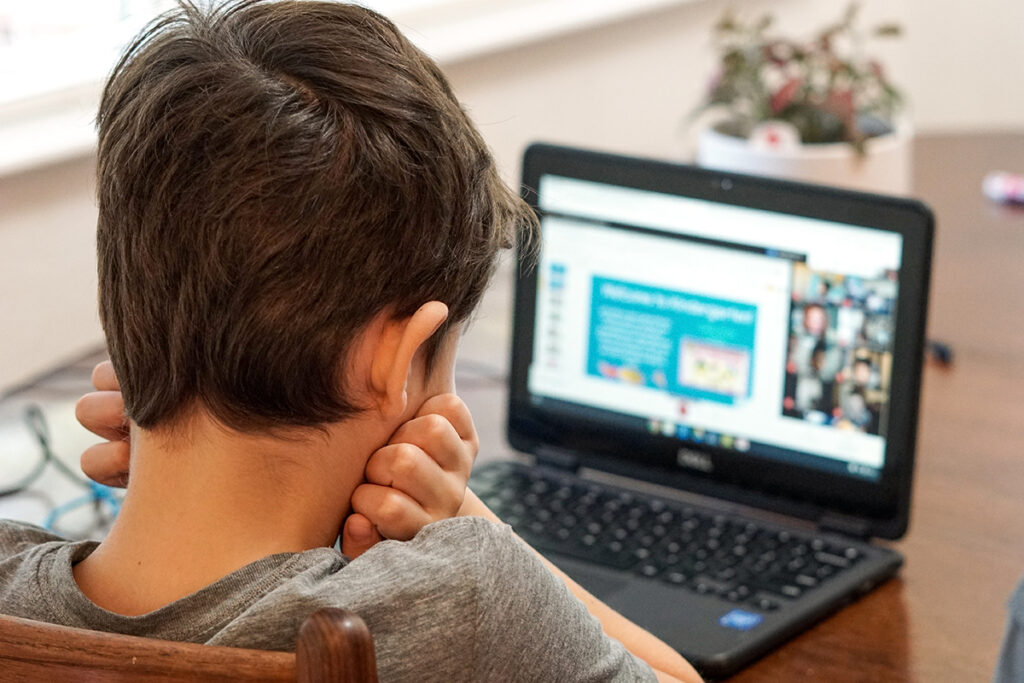
Invite students to be aware of their sources.
It’s not just when students are writing research papers that they should be using valid sources. It’s important when researching art as well! Websites like Wikipedia, Bored Panda, and Pinterest are often met with mixed reviews from academics and educators. On the contrary, they can be incredibly valuable research tools when used as a starting point.
Students can use these websites to find more sources. On sites like Wikipedia, scroll down to the bottom of the article to find hyperlinked footnotes. These will be direct links to the original sources. If an image is found on Pinterest that needs to be traced back to its source, use a reverse image search. The most common are Tineye and Google’s reverse image search. These search engines will find the original portfolio or the original upload of the researched or referenced piece.
Having the original source is incredibly important for citing work and is an important skill for students to learn. Citing sources doesn’t necessarily mean a bibliography; sometimes, it can be as simple as a hyperlink depending on what assignment your students are working on.
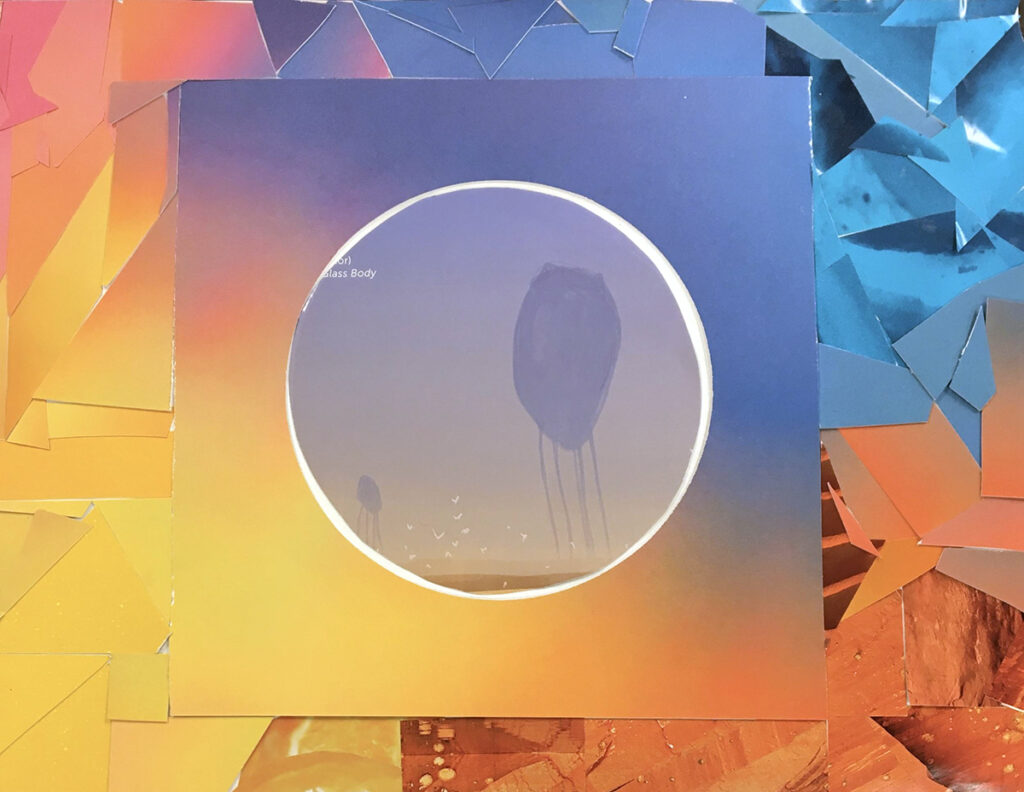
For example, in an online portfolio, a student can say something like, “For my watercolor painting, I referenced a photograph published by the Associated Press,” hyperlinking the exact source of the photo. They can share in an artist statement that they were heavily inspired by Frida Kahlo and referenced her Untitled (Self-Portrait with thorn necklace and hummingbird). As long as students are forthright with where they are pulling their references, they are responsible and conscientious digital citizens.
It is also worth teaching your students about the different types of online sources out there. As mentioned earlier, collaborative websites allow any user to upload and contribute information. Collaborative websites can be a handy starting point, but they require fact-checking, even in the footnotes. Compare this process to scholarly publications that include online journals, databases of research, and books where authors have to go through a more stringent process to authenticate their information.
The ending of website URLs can also tell you what type of source is being accessed. For instance, a link ending with a .gov means it is a government site, and a .edu means it is an educational site. Knowing what type of websites students are accessing can help them determine the validity of the information they find.
Try these activities and tasks with your students:
- Require students to embed links in digital assignments.
- Recommend that students use a certain number and type of sources per assignment.
- Ask students to be detectives and fact-check all the information and sources in a Wikipedia artist biography.
- Compose specific research questions before starting any internet search.
Introduce the plagiarism versus reinterpretation debate.
One of the most common places we see our students as digital citizens is through their research and idea generation. Students are often encouraged to use the internet as a resource, pulling imagery and inspiration from it. But how can students use what they find without plagiarizing it?
In art, we talk a lot about the differences between plagiarism and reinterpretation. Since many students tend to view realism as their main goal in art, quite a few students work to exactly recreate an image they found online. While realistic rendering is an important skill, it is only just that—one skill. And if students are working digitally, it can be tempting to copy and trace! We can guide our students to be more well-rounded by showing them how to creatively solve problems by brainstorming, adapting, blending multiple references, and encouraging them to take and use their own references.
Since ideation is a vital part of artmaking, it can be considered plagiarism to base an artwork directly on someone else’s work. A fictional rule of thumb is that you need to change 30% of an image for it to not infringe on a copyright. However, there is no set percentage of an image that must be changed to avoid copyright infringement in copyright law. The actual legal precedent for copyright infringement was set in the 2014 Seventh Circuit Court case Kienitz v. Sconnie Nation. The court explained that the difference must be “transformative.” They used the analogy “as with the Cheshire Cat, only the smile remains.” While the resulting literal image may be similar, the meaning and interpretation of the image must be completely different.
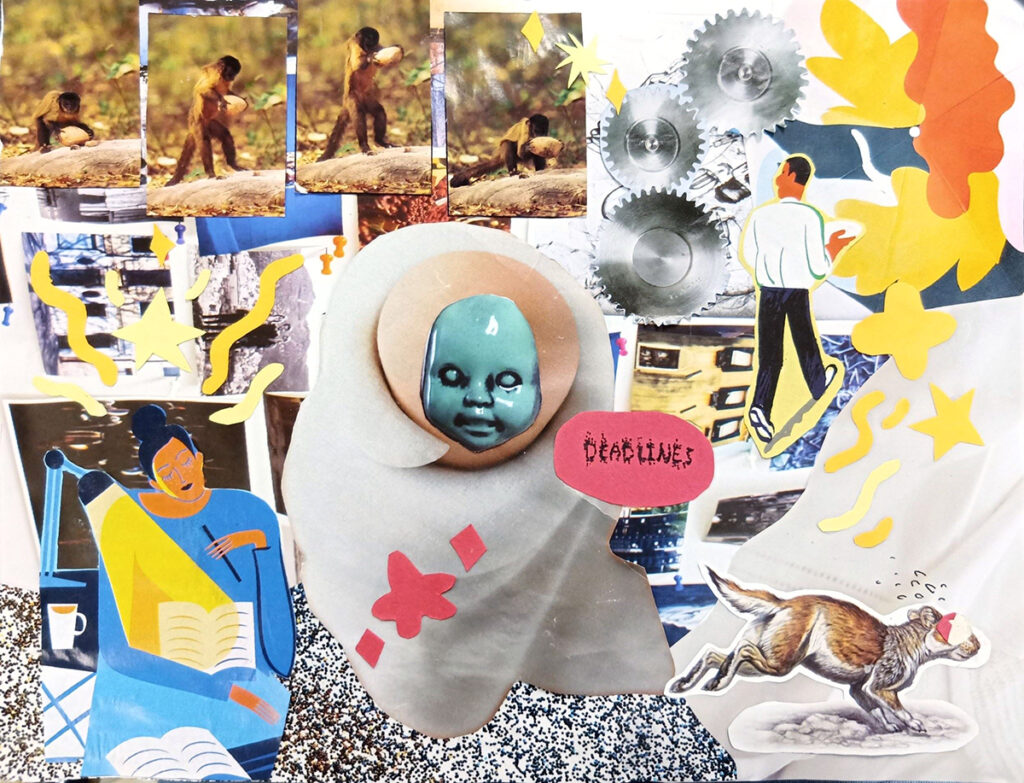
Another place students may run into the plagiarism versus reinterpretation debate is in assemblage or collage work. Students may bring up that they are nervous about using someone else’s work in their own. This makes sense since educators focus so much on the value of original thought. This is where you can talk about what it means to reinterpret an image.
For example, let’s say a student wants to use an image of a giraffe in their collage. They cut out an image from a magazine of a giraffe in a large field. If a student then places the giraffe cutout on an image of a jungle, are they changing the meaning of the original giraffe image? You can push them to experiment with where the giraffe is placed—maybe it’s driving a car, taking a shower, or flying in space. You can also challenge them to alter the giraffe by cutting it apart and fusing it with another animal. A good goal is to encourage the student to change the meaning significantly, thereby reinterpreting the original image.
Try this quick art exercise!
Give students fifteen minutes to work in small groups to create a collage with the most drastic reinterpretation of images. Have students take a picture of all of their images before starting the collage and then take a photo of the finished collage. Students present their documentation and finished collage to the class and make a case as to why they have the most reinterpreted collage. Determine a winning group either by class vote or by you as the teacher.
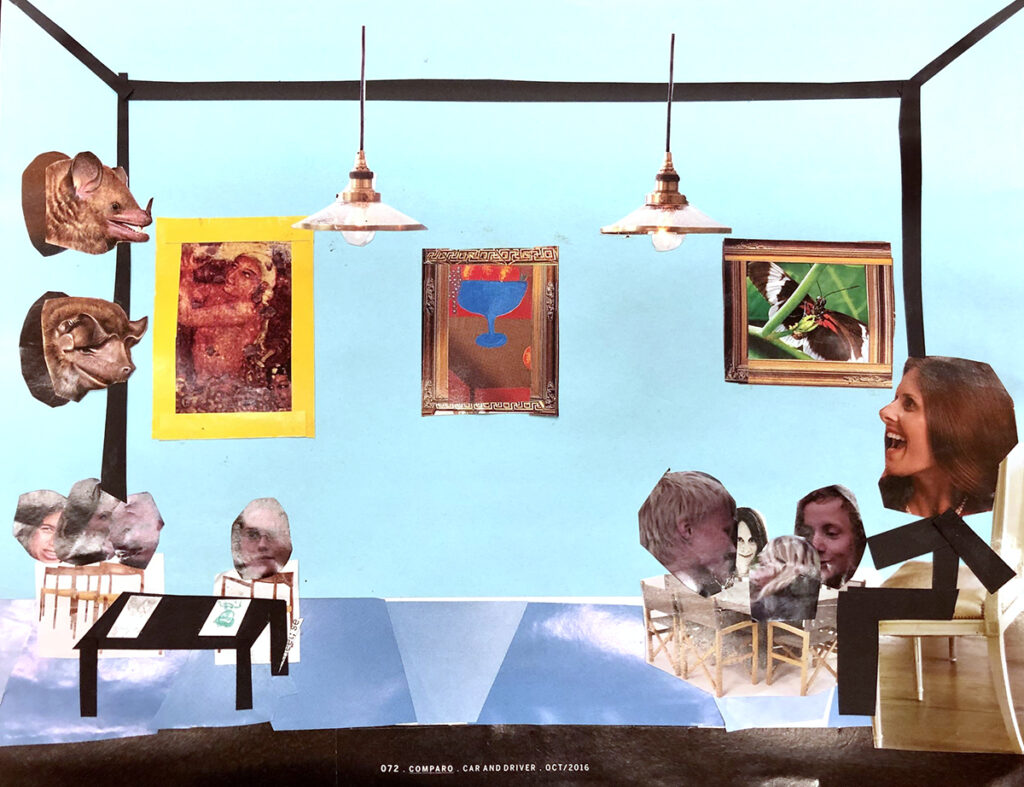
The world is becoming increasingly more digital. Our students must learn how to be responsible digital citizens and artists. As technology advances and infiltrates all parts of our lives, this includes the art room. Take the time to work with your students on their digital citizenship skills. It will benefit them in your classroom, their artwork, and beyond.
How do students cite their sources when they turn work in to you?
In what ways do students use technology in your classroom?
Magazine articles and podcasts are opinions of professional education contributors and do not necessarily represent the position of the Art of Education University (AOEU) or its academic offerings. Contributors use terms in the way they are most often talked about in the scope of their educational experiences.
